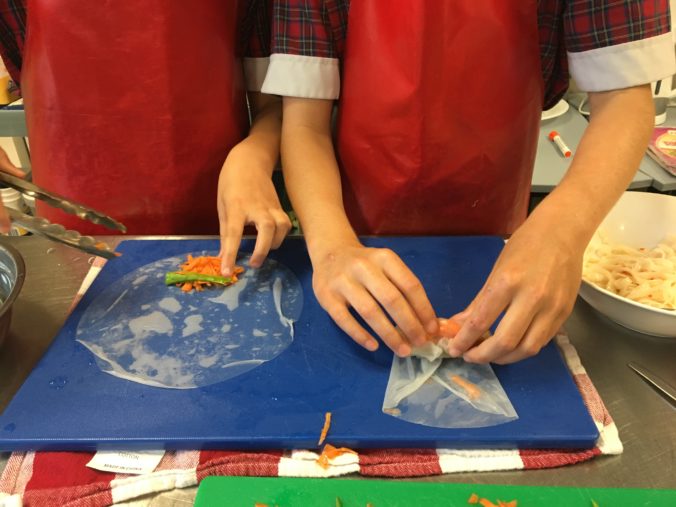Food skills and food literacy are both emerging terms that have an assumed understanding (Pendergast D & Dewhurst Y, 2012; Stinson E, 2010; Thomas H & Irwin JD, 2011; Vidgen H & Gallegos, 2012). Researchers have striven to define these terms in recent years. And there is a divergence of views between them. After all, definitions are simply a description of a concept harnessed from the collective views of people who have provided the input.
Food literacy has been applied to a community setting and defined as ‘a collection of inter-related knowledge, skills and behaviours required to plan, manage, select, prepare and eat foods to meet needs and determine food intake’ (Vidgen H & Gallegos, 2012). Applied to an education setting, I have described food literacy more narrowly as ‘the ability of consumers to understand and act upon the food labelling and nutritional information they need to prepare tasty and nutritious meals for themselves and their families’ (Fordyce-Voorham S, 2010).
Home Economics Victoria (2013) defines food literacy as: ‘the knowledge, skills and capacity to source, prepare, cook and share food in a sustainable manner to promote a healthy and balanced lifestyle. Food literacy is also about individuals understanding the role that food plays in communities and cultures’. (Home Economics Victoria, 2013)
I see food literacy more as a declarative skill…the thinking, two-stage process skill of designing and planning of healthy meals to suit the dietary and sensory (likes and dislikes) needs of family members and friends consuming those meals.
Stage One: Designing
The first stage of designing meals requires the food preparer to think about how best to meet the specific needs of the people consuming those meals. This may mean them drawing upon their own food experiences, consulting their own food experts (friends, mothers!), recipe books, food magazines, TV cooking shows and websites such as www.taste.com.au to begin the creative process of solving the problem of ‘What shall we have for dinner tonight’?
Fortunately, many of the online food resources available include built-in elements such as shopping lists of ingredients, that make it easier for food preparers to complete the next stage of the process…the planning.
Stage Two: Planning
The planning stage of food literacy is a crucial one which requires quite high level skills. Arguably, this step is more complex than the assembling, constructing, preparing and cooking of the meal itself. I say this because there is no shortage of TV infotainment shows which demonstrate how to cook meals. People see..people do…easy.
Back to planning …this step requires a review of the human and material resources available …the time required to review the stock in the pantry and refrigerator, put together a shopping list and then shop for the ingredients to construct the meal.
Planning also includes the preparer’s ability to read, understand and act upon food labels, know seasonal variations of fresh food and how to prepare a budget to purchase those ingredients.
The material resources include the money available to buy those ingredients and the tools and equipment required to make the meal.
Arguably, the most important declarative skill of all is the food preparer’s self-analysis of the procedural skills required to prepare and cook the meal. Here the food preparer needs to appraise whether they have those skills…consider the food wastage if the food burns and needs to be discarded or if the food is so poorly prepared that it is inedible or cross-contaminated and causes food poisoning.
In my next post, I will outline the role of home economics teachers and how they value- add to teaching young people the essential food (literacy) skills.
References
Fordyce-Voorham S. (2010). Identification of food skills for healthful eating programs in secondary schools. Journal of Nutr Educ Behav., 10.1016/jneb2009.12.002.
Pendergast D, & Dewhurst Y. (2012). Home Economics and food literacy: An international investigation. International Journal of Home Economics, 5(2), 245-263.
Stinson E. (2010). Eating the World: Food Literacy and its place in Secondary School Classrooms. (Master of Education), University of Victoria, Melbourne, Australia.
Thomas H, & Irwin JD. (2011). Cook It Up! A community-based cooking program for at-risk youth: overview of a food literacy intervention. BMC Research Notes, 4(495).
Vidgen H, & Gallegos, D. (2012). Defining food literacy, its components, development and relationship to food intake: A case study of young people and disadvantage. Brisbane, Queensland: Queensland University of Technology.
